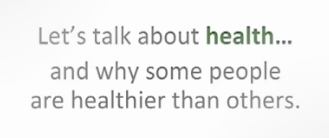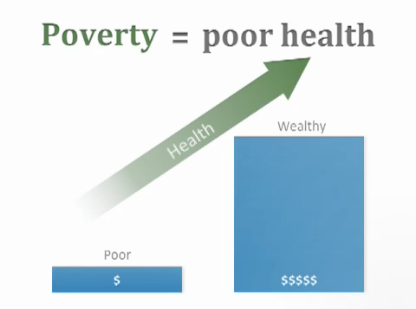Report Back | CHNET Fireside Chat on Taking a Health Equity Approach: Public Health Roles

The teleconference on Taking a Health Equity Approach: Public Health Roles for Improving Health Equity, was hosted by the National Collaborating Centre for Determinants of Health through the CHNET-Works! Fireside Chat series , a project of Population Health Improvement Research Network of the University of Ottawa.
Leading the teleconference were:
- Karen Fish, Knowledge Translation Specialist, National Collaborating Centre for Determinants of Health
- Erika Norris, Public Health Nurse – Health Equity, Halton Region, Ontario
- Janet Braunstein Moody, Senior Director, Population Health, Public Health, Department of Health and Wellness, Nova Scotia
The seminar’s starting point was the systemic pattern of social gradients in health: “Every step along the way, people who have fewer resources are less healthy than those with more money or social status.”

The goal of “improving health equity means:
- Aligning our interventions with social justice values
- Moving upstream to alter institutions, policies and practices that cause inequities
- Working for policies and programs that attempt to ‘level up’ the affects of the social gradient”
The Four Public Health Roles identified as tools to use in this process are:
- Assess and Report: Assess and report on a) the existence and impact of health inequities, and b) effective strategies to reduce these inequities
- Modify and Orient Interventions: Modify and orient interventions and services to reduce inequities, with an understanding of the unique needs of populations that experience marginalization
- Partner with Other Sectors: Partner with other government and community organizations to identify ways to improve health outcomes for populations that experience marginalization
- Participate in Policy Development: Lead, support and participate with other organizations in policy analysis and development, and in advocacy for improvement in health determinants and inequities.
Participants were polled on their familiarity with these 4 roles as well as ways they may have worked with the 4 Roles framework. This included:
- To assess work done so far
- To brainstorm new areas of intervention
- To develop a strategic plan
- To guide day-to-day planning
In her presentation, Erika Norris reviewed how the 4 Roles framework has been used in the Halton region Health Equity Priority Populations Project. The purpose of the project was to enhance understanding of how public health programs can better reach and engage priority populations, and to develop a plan to enhance supports for priority populations. Click here to access a link to an excellent, plain-language video and user guide Let’s Start a Conversation About Health, which was developed as part of this project. The user guide provides a range of tools for engaging in discussion with community/participant stakeholders on a determinants-of-health-based, 4-Roles approach to addressing health equity issues.
Starting from the Modify and Orient Interventions role, and using local data, literature and key informant interviews, the Health Department identified a diversity of potential actions under their mandate in alignment with all four roles for public health action. Learning from the project emphasized that addressing health inequities is a journey, and that it is important to find ways of get going, wherever your organizations initial starting point may be.
Janet Braunstein Moody discussed the process of the Nova Scotia Department of Health and Wellness in developing a common vision, as part of a planned system renewal of public health in their province. Thus far, the project has identified the following “stakes” and public health standards.
The Nova Scotia Public Health Moving Forward: A Commitment to Public Health’s Future (2010) includes the “Six Stakes”:
- Purpose Statement
- Participatory Leadership
- Relationships and Roles
- Core Public Heath Functions
- Areas of Focus: Commitment to social justice
- Core Competencies
The establishment of the Nova Scotia Public Health Standards 2011-2016 including:
- Health Equity as part of a foundational standard, covering all 4 Roles: “Public health assess and reports on the health of populations, describing the existence and impact of health inequalities and inequities and effective strategies to address those inequalities/inequities; Public health modifies and orients its interventions to reduce inequities including the consideration of the unique needs and capacities of priority populations; Public health partners with other service providers to collectively address health inequities; Public health engages and enables communities and other stakeholders in policy analysis, development and advocacy
- Health Equity as part of protocols, providing further description of public health work in health equity.
Braunstein Moody describes the process as involving a ‘learner’ attitude, with a need for lots of thinking, learning as one goes, and starting with more questions than answers. Learn more about the Nova Scotia project here
The Four Roles tools are applicable at organizational, community, and government levels. They can provide a useful way to identify both how the social determinants of health are currently being applied within programs, and also where there are gaps and opportunities for development. If you have been using a 4 Roles approach in your planning for your programs, it would be great to hear your stories.